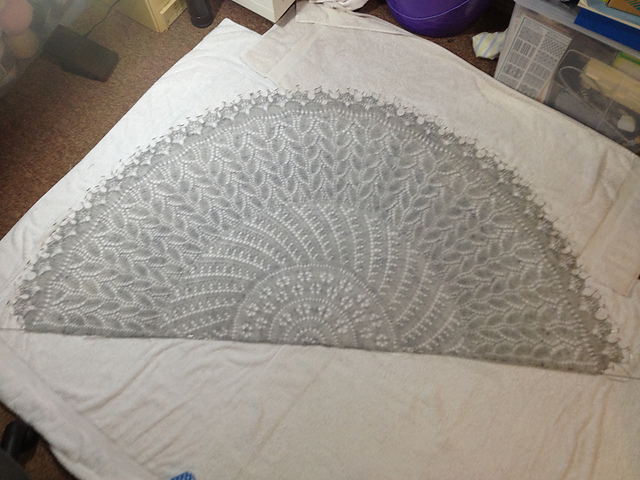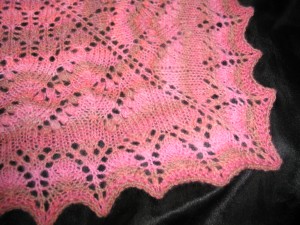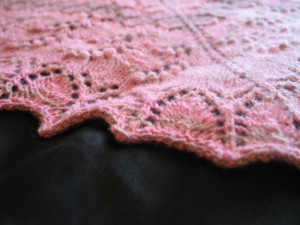It’s always lovely when a member of our Stitch & B’ch group gets married or has a baby. We usually make something as a group or the few of us who know her best, make a blanket or shawl. Early this year we found out one of the newest knitters in our group, Cat, was getting married and she knew what she wanted to knit for her wedding and what she wanted help with.
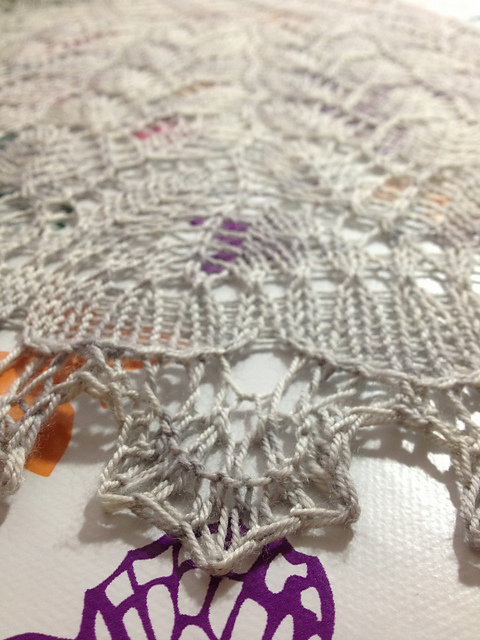 It was so good to have guidance, sometimes we make something as a surprise without much understanding of what the person might want. Cat wanted us to knit a special shawl to match the accessories for her wedding dress. The yarn was Superwash Merino/Cashmere/Nylon in 4ply/fingering weight which I dyed a warm grey.
It was so good to have guidance, sometimes we make something as a surprise without much understanding of what the person might want. Cat wanted us to knit a special shawl to match the accessories for her wedding dress. The yarn was Superwash Merino/Cashmere/Nylon in 4ply/fingering weight which I dyed a warm grey.
 Cat chose the lovely Elizabeth Zimmermann 100th Anniversary Camping Half Circle Shawl (which is available for free on Ravelry) for us to knit for her. This went swimmingly with each of us taking it home for a week or two to complete a section and bringing it back to the group for someone to carry on. It blocked out to a lovely size for Cat to wear on her big day.
Cat chose the lovely Elizabeth Zimmermann 100th Anniversary Camping Half Circle Shawl (which is available for free on Ravelry) for us to knit for her. This went swimmingly with each of us taking it home for a week or two to complete a section and bringing it back to the group for someone to carry on. It blocked out to a lovely size for Cat to wear on her big day.
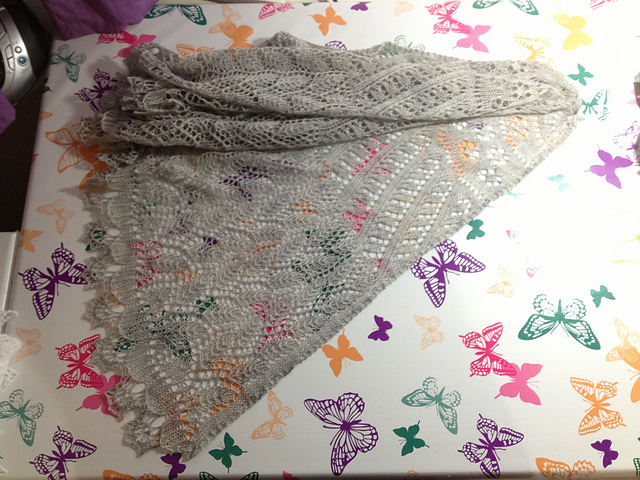 The lace for this shawl is really pretty and deserves some close ups, the edging is really lovely. You can find all the project details here.
The lace for this shawl is really pretty and deserves some close ups, the edging is really lovely. You can find all the project details here.
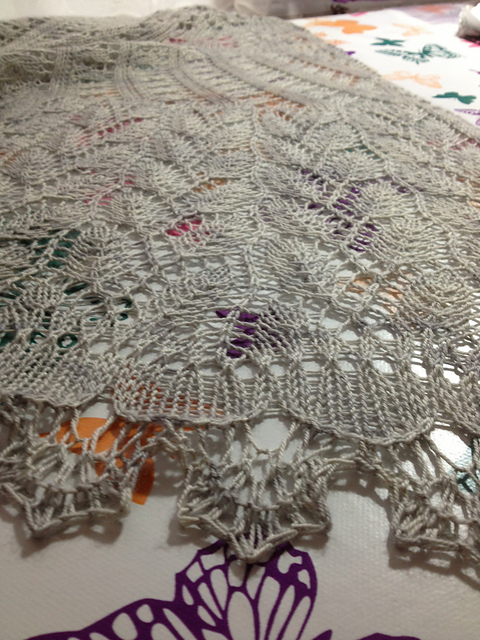 Cat also wanted to knit a shawl for her bridesmaid and decided to pick the Dew Drops Shawl pattern I wrote a few years ago. Those of you who have knitted it will know it’s not best suited to a new knitter who hasn’t really done lace. But she was brave!
Cat also wanted to knit a shawl for her bridesmaid and decided to pick the Dew Drops Shawl pattern I wrote a few years ago. Those of you who have knitted it will know it’s not best suited to a new knitter who hasn’t really done lace. But she was brave!
Cat did amazing work knitting her way through hundreds of metres of lace weight yarn in stocking stitch, realising that the lace would take her until well after the wedding to finish and with lots of other things to do for the wedding she handed over the shawl to some other members of our group. They worked their magic and with 2 weeks to go before the wedding it came to my turn to work the last chart and cast off and block. I was quite excited, it’s been a while since I’ve had a chance to knit some lace and even longer since I’ve knitted a Dew Drops shawl.
The first thing I did was weigh the remaining yarn, when the scales said 50g you could have knocked me over with a feather. We needed more than another 14 rows to make this into a good sized shawl!
I started adding an extra repeat of chart 4 and 5, this pattern is totally customisable on size and my triangular shawl calculator makes it easy to know how many rows you can knit your remaining yarn. It does all the maths for you! My finger marks where the knitting was at when it was passed to me, with 50% of the yarn remaining, so it would have been quite small and a waste of the lovely coloured yarn.
 A few days and 40grams of yarn later, not to mention 3 hours of casting off, I had this crumpled mess. The Dew Drops Shawl with it’s circle of lace with reverse stocking stitch looks pretty awful unblocked and I’d almost forgive someone who frogged at this point.
A few days and 40grams of yarn later, not to mention 3 hours of casting off, I had this crumpled mess. The Dew Drops Shawl with it’s circle of lace with reverse stocking stitch looks pretty awful unblocked and I’d almost forgive someone who frogged at this point. 

After blocking I’m sure you will agree it is worth the effort! I’m sorry these last two photos are so poor, the tremor in my hands was pretty bad when I took them!
You can see how much it grew with the blocking too!

Next time I can hopefully share some great summer holiday knitting photos with you.

